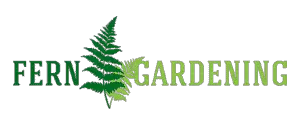Plant identification can be a tricky business. Sometimes a new arrival appears in the yard, or a walk in nature presents you with an unfamiliar specimen, and it isn’t clear what you’ve discovered. If the foliage is delicate and segmented you may assume the plant is a fern, but is there a way to tell for sure?
Ferns have three distinctive features that are not shared with other plants: they do not produce flowers, their new shoots emerge as curled “croziers” that unfurl into fronds, and they commonly have “sori” on the fronds that contain the spores which ferns use to reproduce.
While these features are indicative of ferns, there are – as with all things in nature – exceptions. The only way to be sure that you have identified a fern would be to consult a detailed botanical key, but most of us don’t have time for such careful analysis, so it’s useful to have a more quick and reliable way to be pretty sure that a plant is indeed a fern.
1. No flowers
A defining feature of ferns is that they cannot produce flowers. Ferns evolved early in the history of life on earth, and predate the evolution of flowering plants. Therefore, no fern species is able to produce flowers.
While this fact makes it easy to dismiss any plant that does have flowers, there are a couple of limitations. First, you have to hang around for long enough to be sure that your unidentified plant is in the flowering season – it may just not have flowers yet .
Second, many plants other than ferns are also non-flowering, and so the absence of flowers is not definite proof that you have found a fern species.
Third, it can sometimes be difficult to tell for sure what is and isn’t a flower. Some ferns have specialized “fertile” fronds that are laden with spores, and very different in appearance to the “sterile” green fronds that surround them.
The Osmunda species are renowned for this misleading feature. Their fertile fronds are upright, and brown or red colored, making them completely distinct from the green foliage that surrounds them.

Cinnamon fern
- Osmunda cinnamomea
- Deciduous
- Prefers partial shade
- Height: up to 1.5 m
- Soil: acid. Moist, poor drainage tolerated.
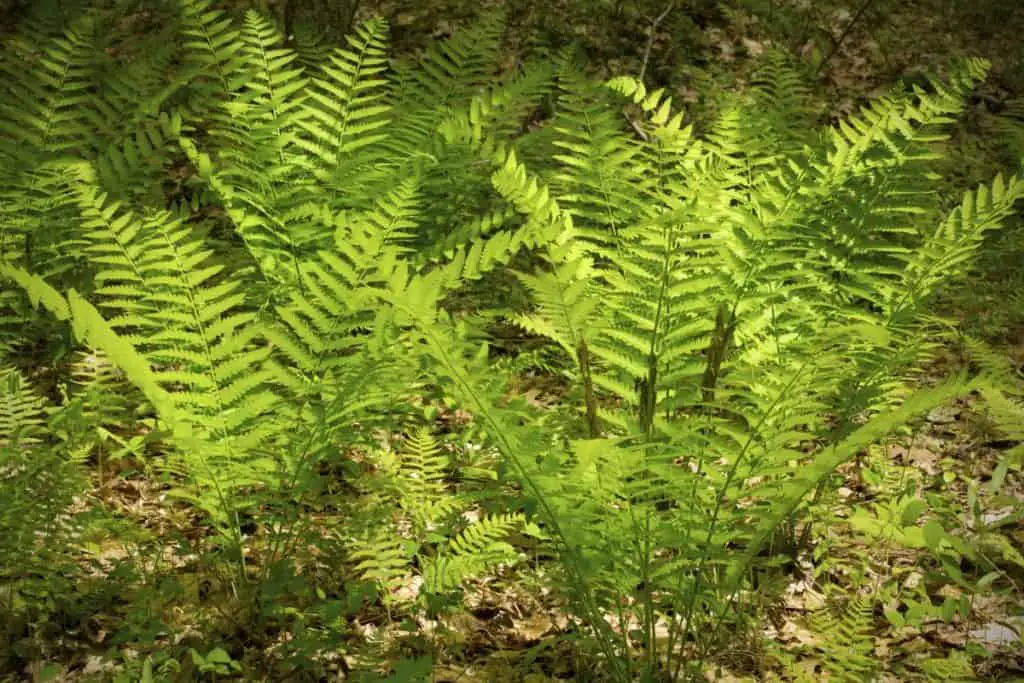
Interrupted fern
- Osmunda claytoniana
- Deciduous
- Prefers partial shade
- Height: up to 1 m
- Soil: acid. Moist, poor drainage tolerated.
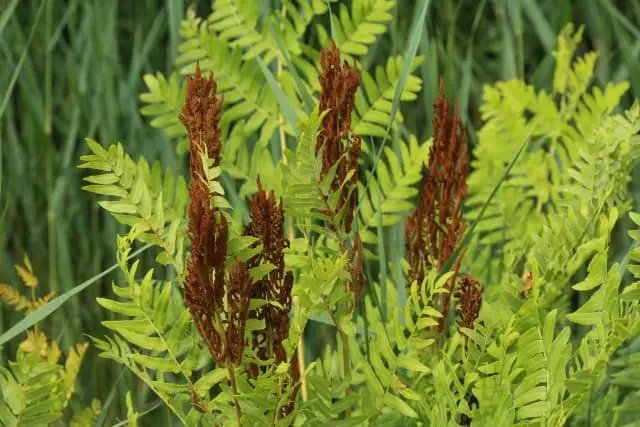
Royal fern
- Osmunda regalis
- Deciduous
- Full or partial shade, and full sun
- Height: up to 2.5 m
- Soil: acid, neutral or alkaline. Moist, poor drainage tolerated.
Understandably, most people assume this is a separate part of the plant – and in fact the Royal fern is sometimes called the “Flowering fern”, emphasizing how easy this mistake is to make.
Finally, other plants can have flowers that are so plain looking, green, or unremarkable that they are easily overlooked. A classic example of this would be the asparagus family.
Although popular for cooking when the spears first emerge, asparagus can also be used as an ornamental plant, which has green flowers so fine and delicate that they are hard to distinguish from foliage. As a result, this flowering plant is sometimes inaccurately called “asparagus fern” because of its resemblance to true ferns. There are other, closely related species also named this way, such as the foxtail fern.
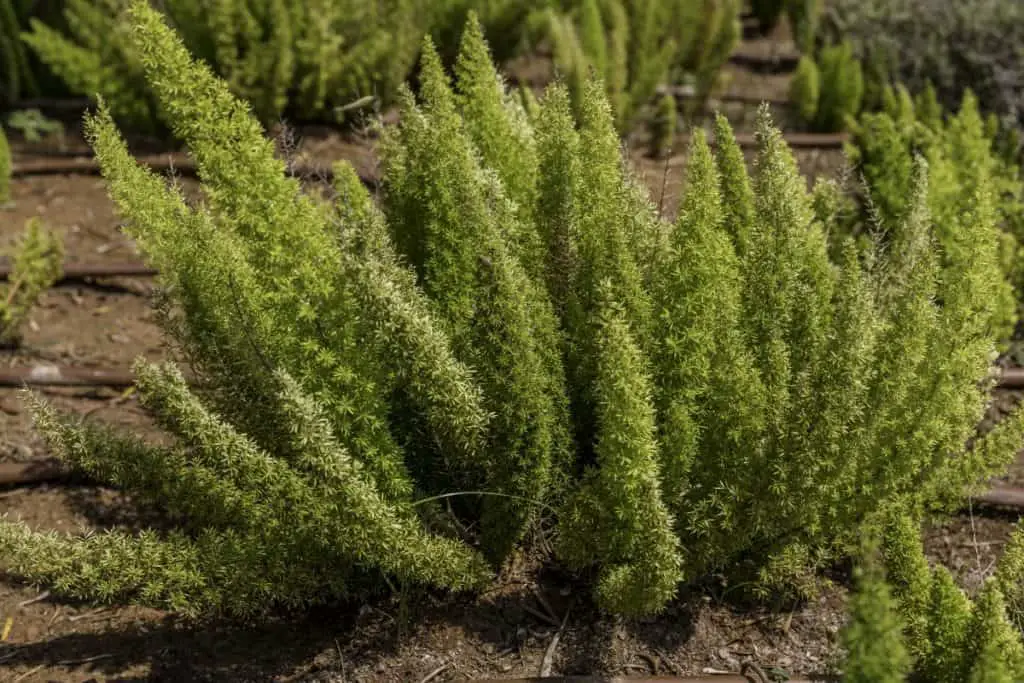
Certainly, any plant with showy, obvious flowers can be dismissed at once as not a fern, but for those plants with less obvious flowers and a fern-like appearance in their foliage, other signs must be used for identification.
2. New shoots emerge as “fiddleheads”
Another characteristic feature of ferns is that their leaves – or, fronds – emerge from the base of the plant as single, tightly curled-up structures known as “fiddleheads”.
This name reflects their resemblance to the end of a violin, but the emerging fronds are more properly termed “croziers”. The crozier slowly unfurls as it grows upwards, revealing that the full structure of the frond is preformed as a complete unit, that is decorated with delicate leaflets or “pinnae” that open outwards as the fiddlehead straightens up.
This process can be seen clearly in time lapse footage:
The growth pattern of croziers contrasts with the emerging stems of flowering plants. Here, a single stem typically rises and sends out leaves at branching points as it grows. The stem emerges from a seed as a simple structure that gains complexity as it develops, not as an already-complete frond that slowly uncurls. Again, a time lapse can help to show the difference:
Although this principle generally holds up for distinguishing ferns from other plants, there is one exception. Bracken has croziers that emerge from the ground curled up, but it also develops branches as the frond grows, meaning it ends up looking more like a main stalk with leaves hanging off it.
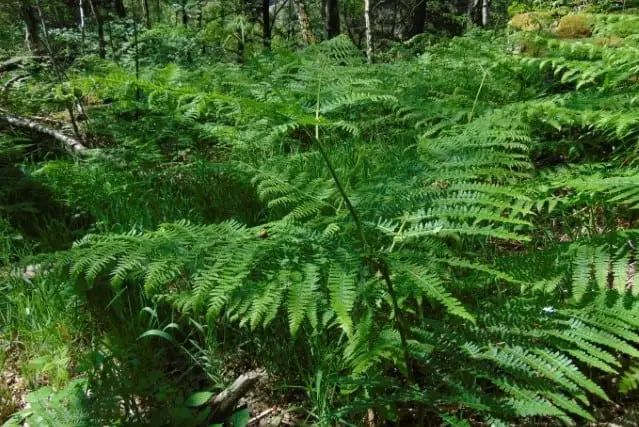
Common bracken
- Pteridium aquilinum
- Deciduous
- Prefers partial shade or full sun
- Height: up to 1 m
- Soil: acid, neutral or alkaline. Moist, well-drained.
Despite this, it is hard to imagine anyone not recognizing bracken as a fern, given its absolutely classic fern-like appearance!
3. Several fiddleheads emerge from a crown
Another common distinction between ferns and other plants is that the emerging fiddlesticks usually form a close-packed cluster that grow out from the heart of the fern at the level of the soil. The majority of ferns have this crown-forming habit where the base of the plant sends multiple shoots upwards from the growth zone in the rhizome.
If your unidentified plant is a single, newly emerged specimen, look at the soil around the base for any other small fiddleheads that may be following.
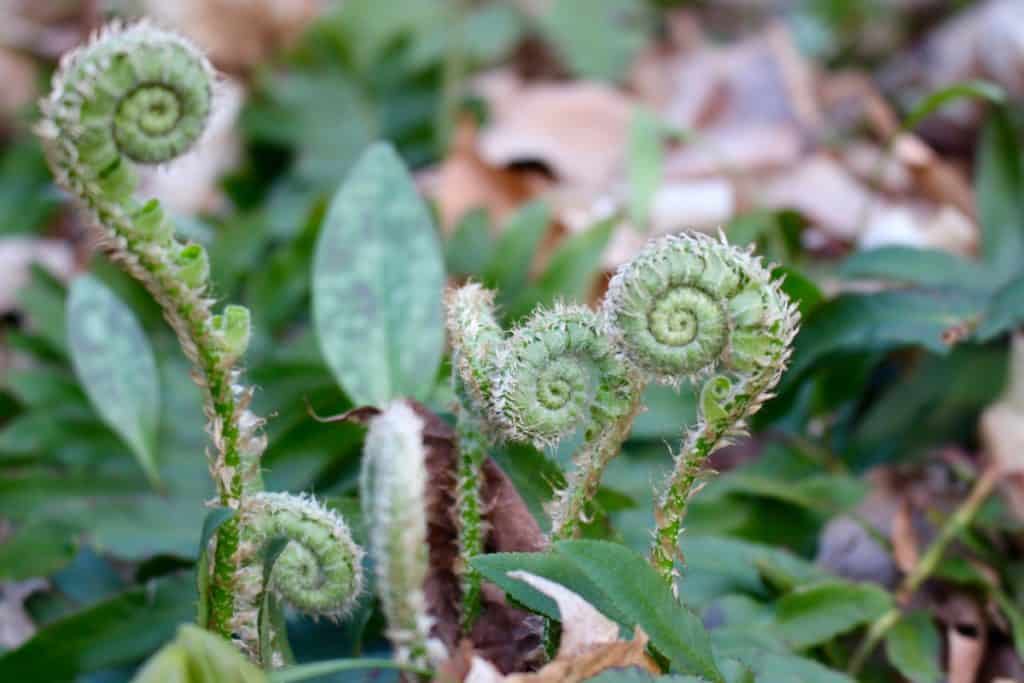
This growth pattern is characteristic of ferns, and contrasts with most flowering plants that have a single stem that emerges from the germinating seed. That said, any plant that grows with a bushy habit may, of course, mislead you.
4. The leaves have strange circles or stripes on the underside
Finally, another good indicator of a fern is the presence of circular or stripy patterning on the underside of the frond. These are known as “sori” and are the structures that contain the densely packed spores that ferns use to reproduce instead of seeds.
For the majority of ferns, the sori are circular and on the underside of the frond. For some species, such as the Hart’s tongue fern, the sori are strips. For chain ferns, the sori are on the top of the frond rather than the underside. Sori can be green, or brown, or red, and can change color over the course of the year.

Regardless of this variety of shape and size, the presence of sori is a very strong indication that an unidentified plant is a fern – there are few similar structures that could be mistaken for sori on flowering plants.
But, as always, there are exceptions. Some ferns lack sori on sterile fronds (such as the Osmunda species mentioned above), and for some ferns the fronds do not develop sori until they are mature. That means, just as for flowers, you may have to wait until you are confident that the plant is fully developed before it can be classified as a fern for sure.
Identification of an unknown plant as a fern can be confidently achieved by looking for these few key signs in almost all cases. There are exceptions, as for any aspect of nature, but if your unidentified specimen has more than one of these characteristic features (no flowers, fiddleheads that emerge from a crown, or sori) then it is highly likely you are dealing with a fern.
